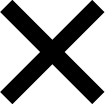
In the future of creative education structures, people can structure their studies according to their interests. Learning from other peoples experiences and perspectives (first hand) who are not the typical teachers of today. Curiosity is powered from a very young age as well as other soft skills, for example: listening, honesty, tolerance, forgiveness, acceptance, empathy and a profound care for the planet and how their actions can impact it. Students (listeners, curious people, questioners) acknowledge the intellectual property of others. The ones that become politicians or decisionmakers must always be learning and recognizing they are not always right: live-long learning is one essential part of the society.
Different knowledges are always situated in a certain context and can therefore exist equally to each other at the same time, because there’s a culture of exchange. Also the relationship to other species is fundamentally re-transformed in a more equal way. Knowledges and experiences about strategies to provide ressources for basic human needs such as food, are transformed in a profound caring for the planet.




The Cone helps categorise future scenarios into four distinct buckets:
And lastly, preferred futures, the Holy Grail of speculative design. Preferred is where you place the scenarios you want to happen.
This is where most design practitioners operate. It describes what is likely to happen unless there is an extreme disturbance or turmoil.
Plausible refers to what could happen. It’s where scenario planning and speculation live.
At the edge of the cone is what might happen, even if it’s difficult to imagine.
Discussion
No feedback has been added yet
Share a Thought